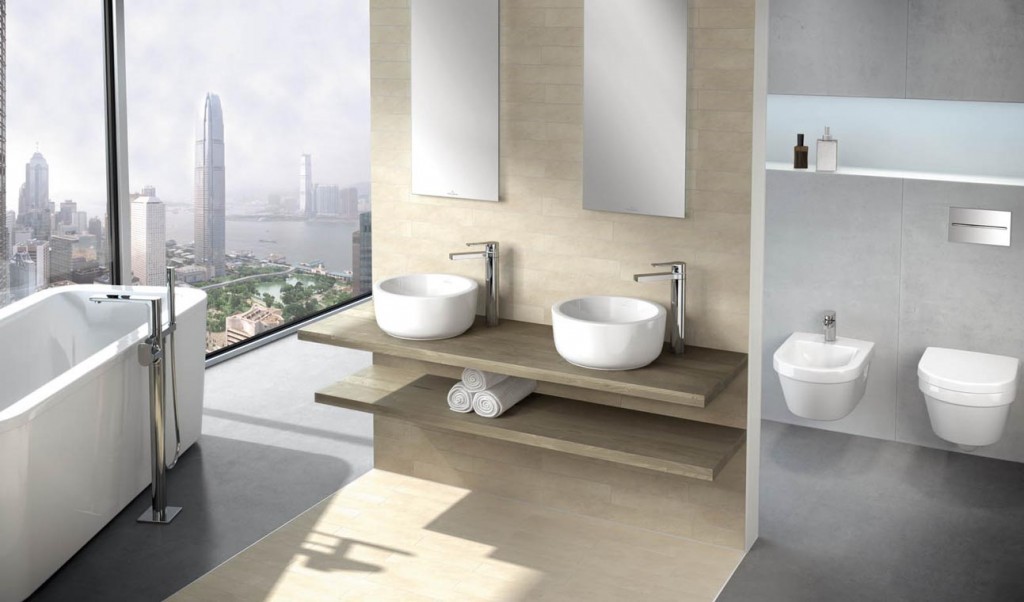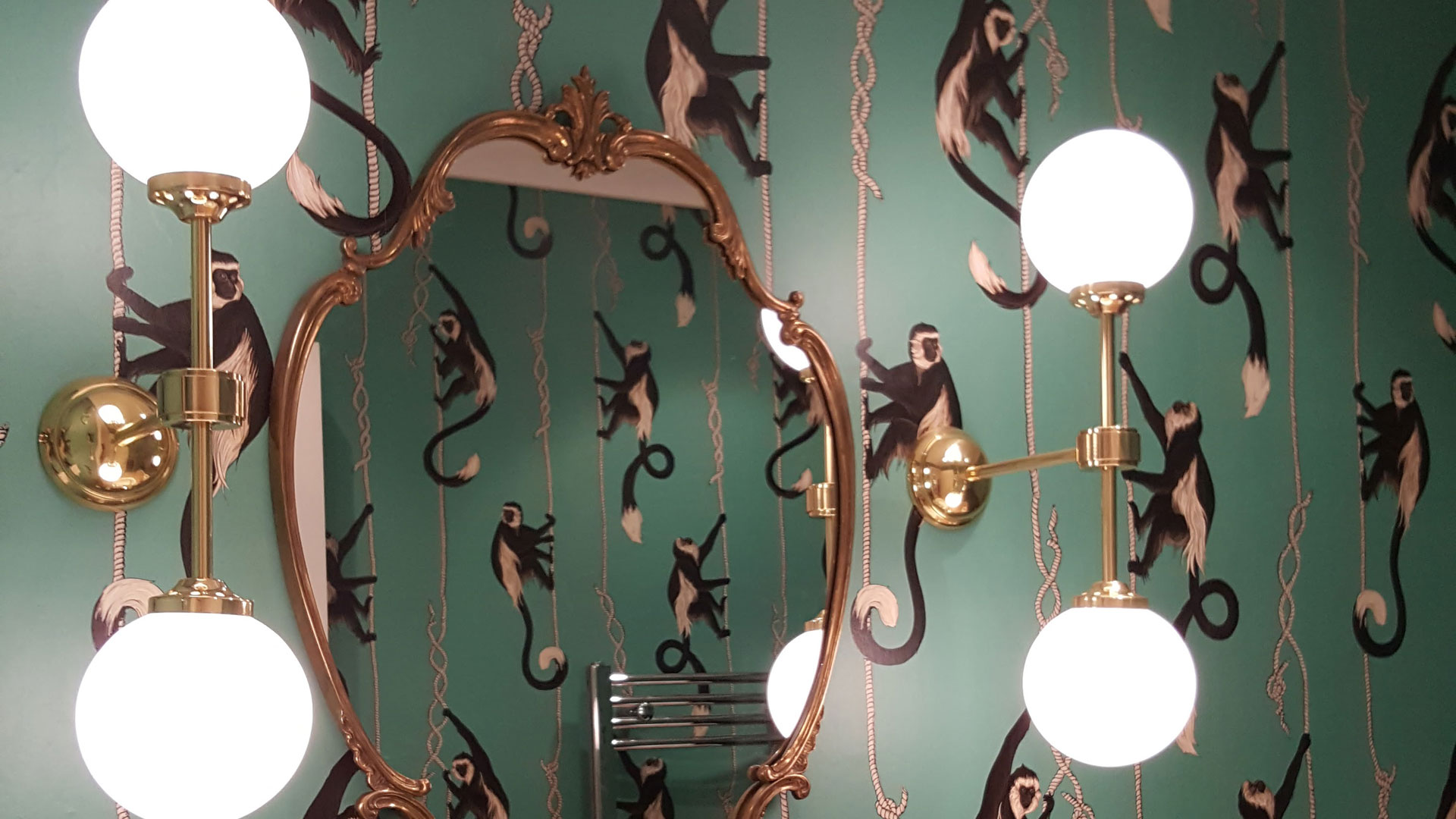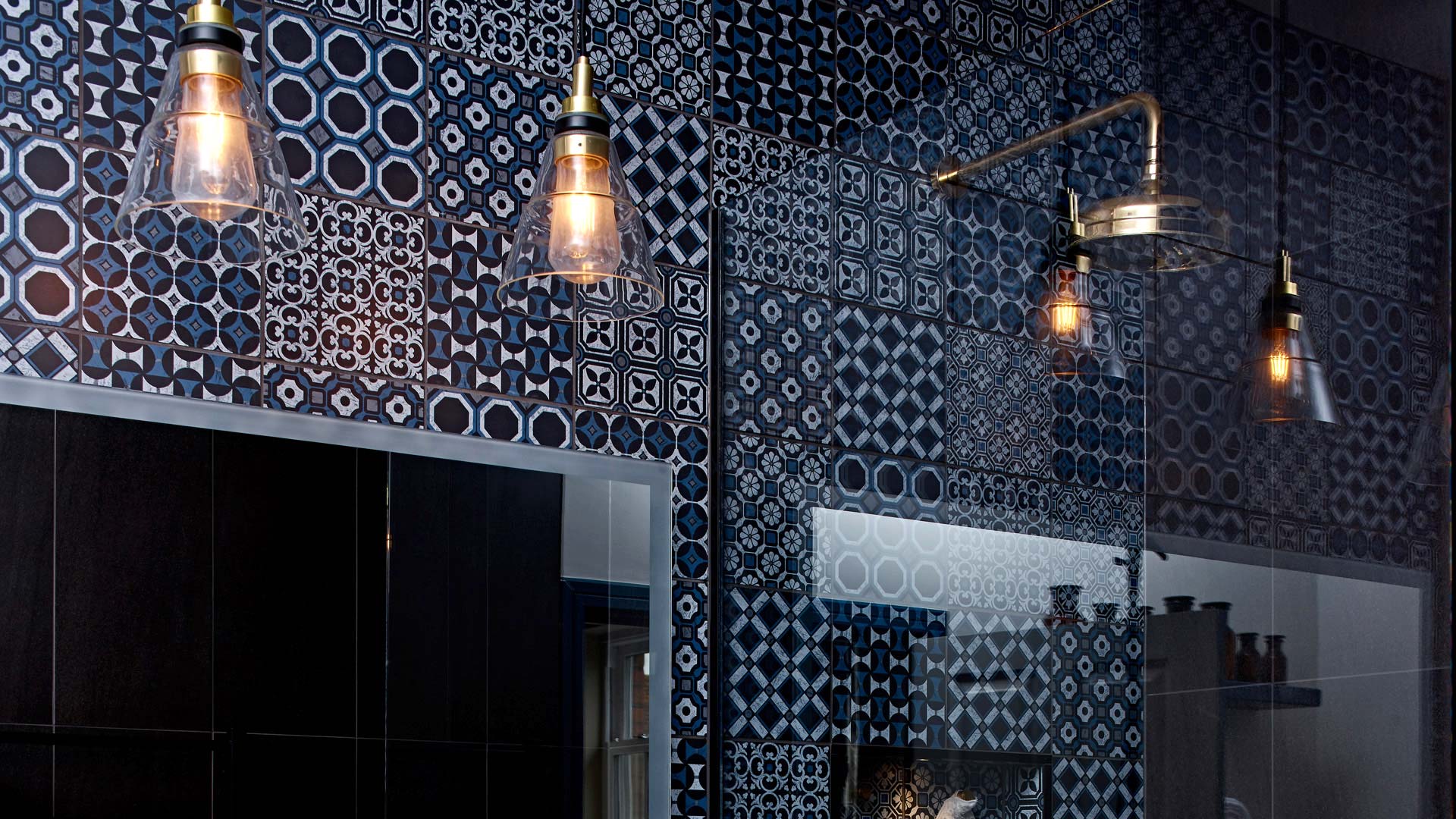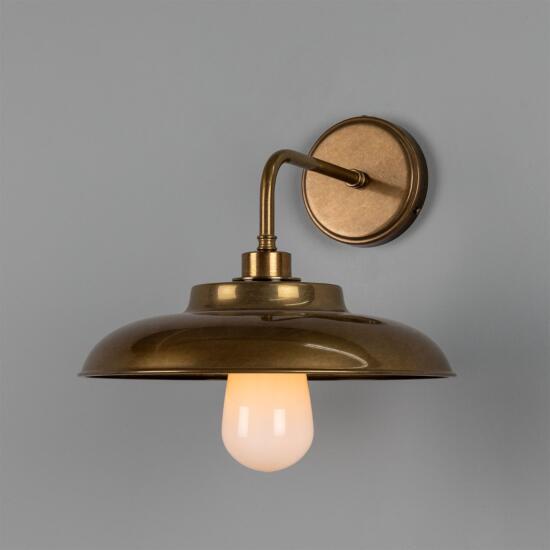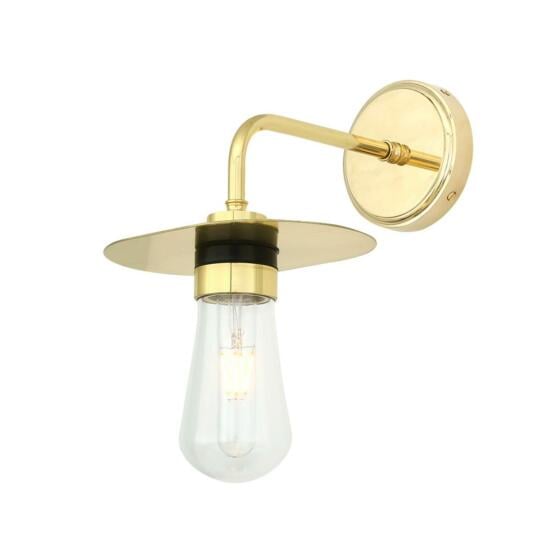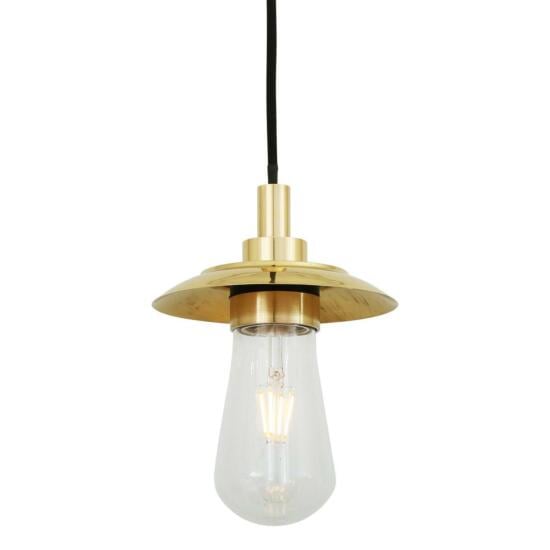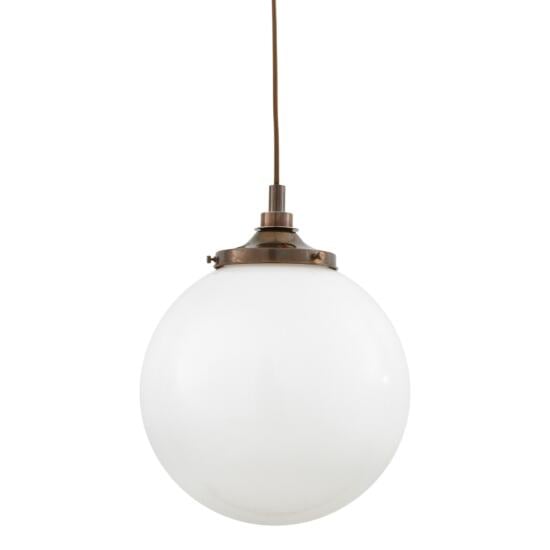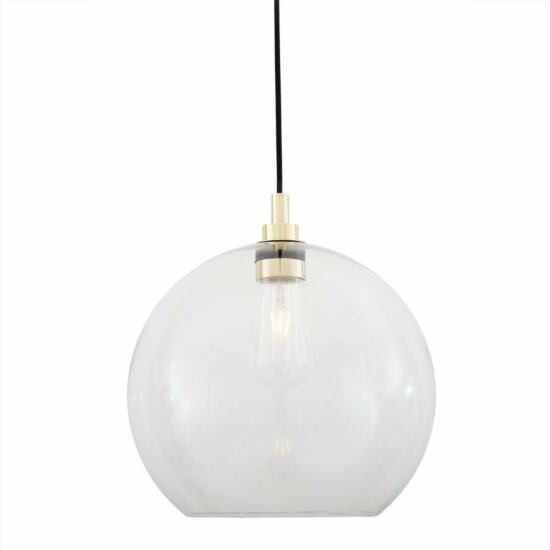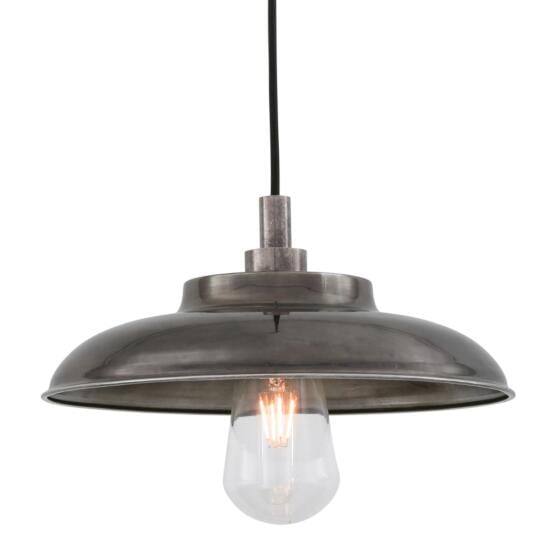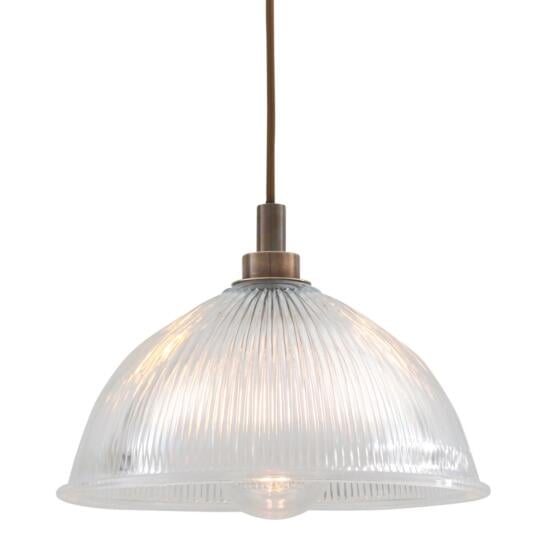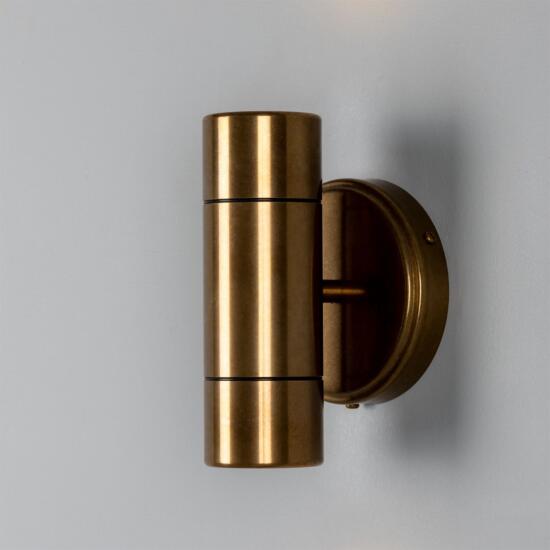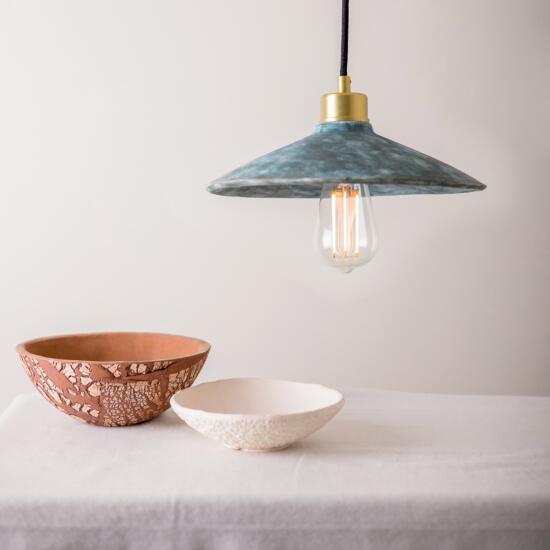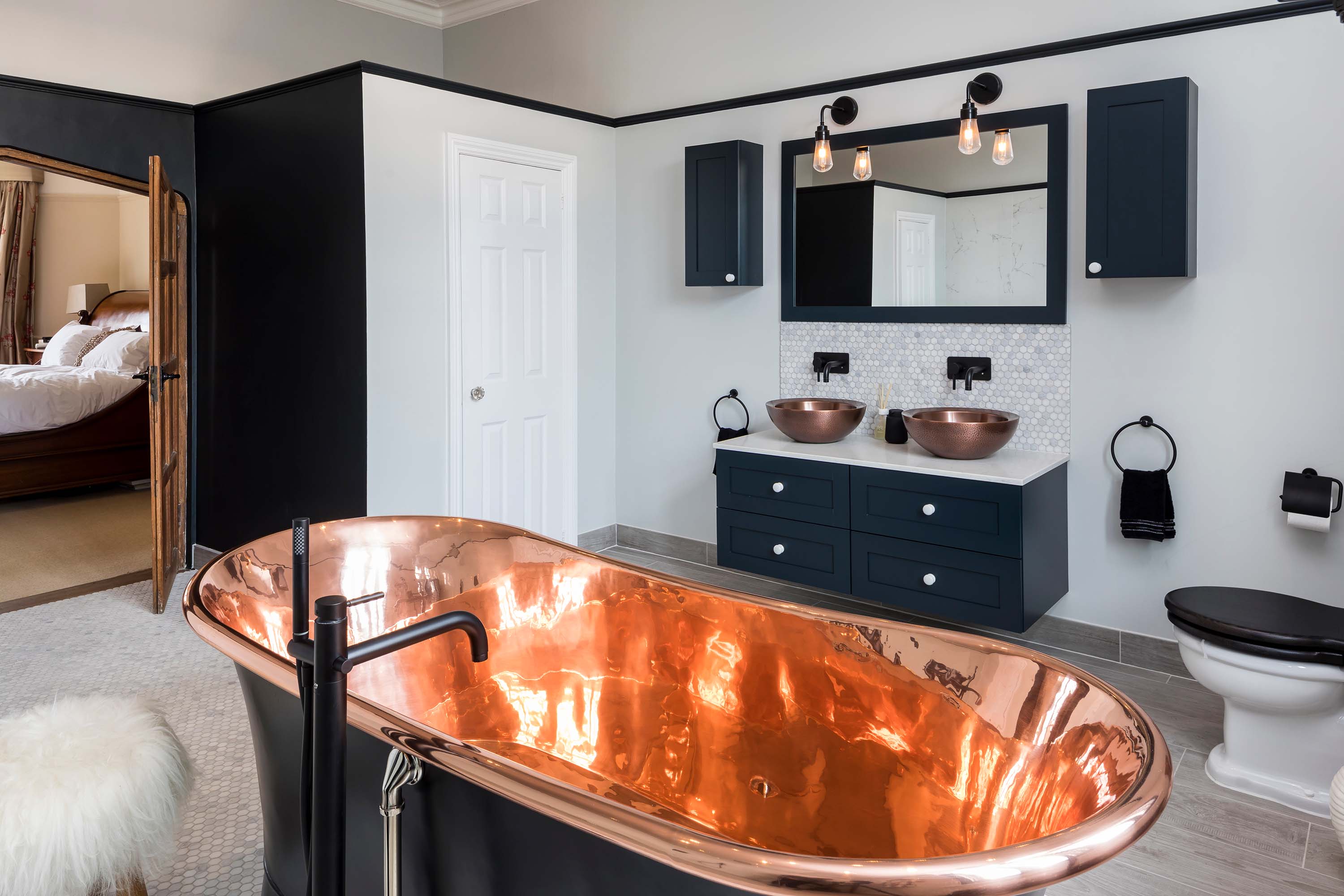
IP Rating of Light Fixtures Explained
IP Rating of Light Fixtures Explained
When choosing lighting for your home, it’s essential to consider how well your light fixtures are protected against dust and moisture. This is where IP ratings come into play. In this guide, we’ll break down what this means and help you to choose the right light for each location.
An IP rating is shorthand for an Ingress Protection mark. The IP (Ingress Protection) rating of a bulb or light fixture tells you the level of protection it has against dirt and water.
An IP rating consists of two digits. The first digit represents protection against the ingress of solid objects i.e. dust. The second digit represents protection against the ingress of liquids i.e. water. The higher the value of either digit, the greater the protection.
Any fixture that is used in a bathroom, garden or wet environment should have an IP rating that is sufficient (high) enough to stop the ingress of dust and water.
Lower IP Ratings
Lower IP ratings are categorised as being below IP44. These are designed for indoor use in spaces that have very little exposure to dust or water, like your living room or bedroom. Most light fixtures inside your home will be rated IP20.
Acceptable for Indoor Use:- IP20: Sufficient for most dry rooms.
- IP44: Suitable for semi-sheltered outdoor spaces like covered porches, patios, balconies, pergolas, or indoor areas such as cafés and conservatories. It should not be installed in fully exposed environments with heavy rain or constant water spray.
- IP65+: Suitable for damp indoor areas or sheltered outdoor spaces.
Higher IP Ratings
Higher IP rated light fixtures are built for environments with heavy moisture, dust, or direct water exposure. If there is a chance of contact with dust or liquids, selecting a fitting rated IP65 or above is recommended.
Light fixtures that are rated IP65 and above are considered to be waterproof and are suitable for both indoor and outdoor use.
Common High Ratings:- IP65 – Protected against dust and low-pressure water jets. Not submersible.
- IP66 – Can withstand powerful water jets from any direction, but still not submersible.
- IP67/IP68 – Suitable for full or continuous submersion, like inside showers or pools.
- Outdoor wall light next to your back door? → IP65
- Ceiling light in a covered porch? → IP44 minimum
- Light directly above a shower or bath? → IP65 or IP67
- Vanity light above or beside a mirror? → IP44 (higher if close to water)
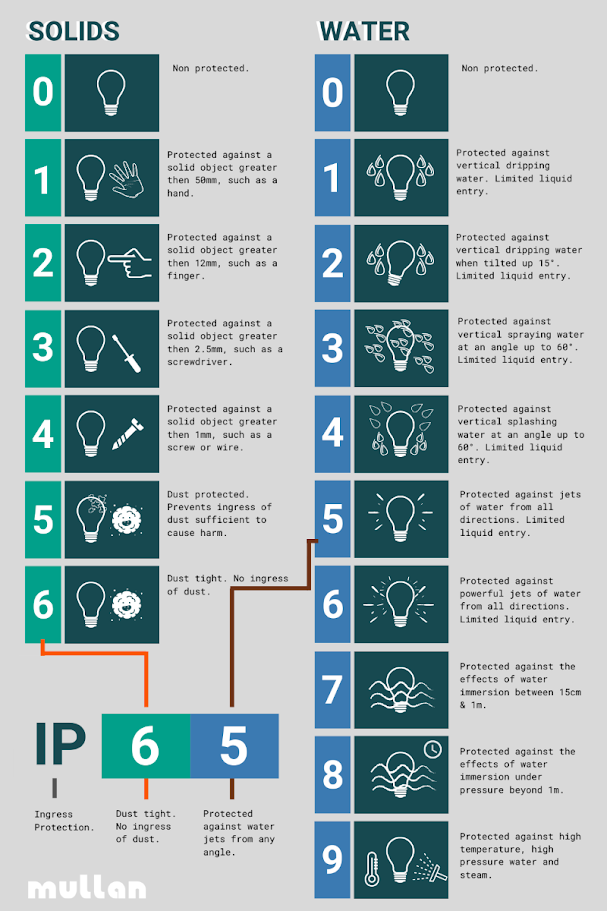

- IP67 or higher is required for submersion, with IP68 offering continuous water immersion protection.
- Always verify the exact IP rating against the environment’s exposure to ensure compliance and safety.
Please note: The above table reflects Mullan Lighting’s interpretation of aligning IP rating with UL/USA location categories and is intended as a general guideline.
EU vs US Lighting Standards
When choosing lighting for wet or outdoor areas, it’s important to understand how safety standards differ between the EU and the US. While both aim to protect users from electrical hazards, their approaches are quite distinct.
1. How Ratings Are Defined- EU: Uses the IP rating system, based on IEC standards. Each rating indicates how well a light fixture is protected against dust and water.
- US: Follows UL (Underwriters Laboratories) standards and the National Electrical Code (NEC). Instead of IP ratings, areas are classified as either “wet” or “damp”.
- EU: Breaks down bathrooms and wet zones into Zones 0 to 3, depending on their distance from water sources. Each zone has specific IP rating requirements and voltage restrictions.
- US: Uses broader terms like “wet” (direct water contact) and “damp” (occasional moisture). No zone system is used.
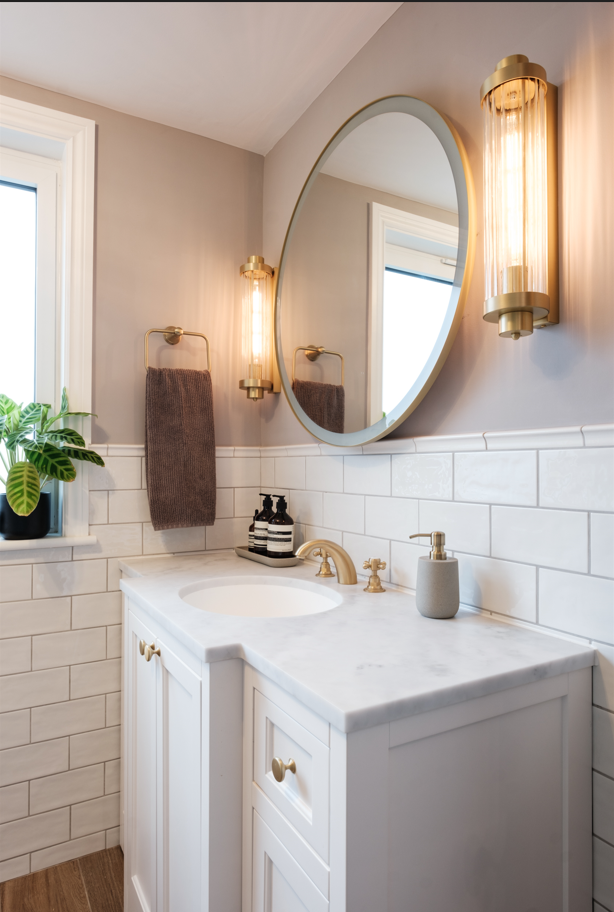
3. Voltage and Safety Devices
- EU: Often requires low-voltage (max 12V) lighting in areas with direct water contact (like swimming pools and in-ground lighting) and mandates the use of Residual Current Devices (RCDs).
- US: Allows standard 120V or 240V fixtures, even in wet areas, as long as they are protected by Ground Fault Circuit Interrupters (GFCIs).
- EU: More detailed and stringent, especially in bathrooms. IP ratings and zones make it clear which fixtures are allowed where.
- US: More flexible but places strong emphasis on protective devices like GFCIs at the circuit level.
There’s no direct conversion between IP ratings and UL classifications. Instead, always check the specific use-case approval for UL listed fixtures.
Light Safety in the Bathroom
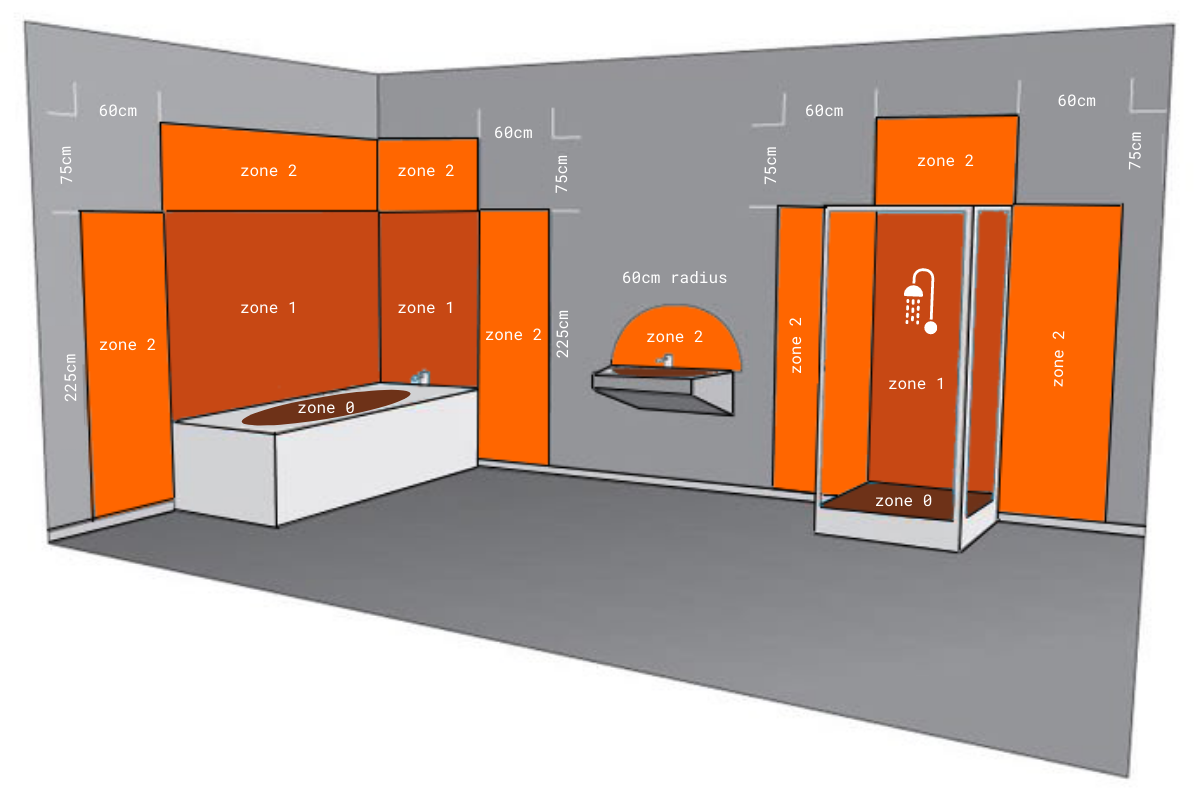
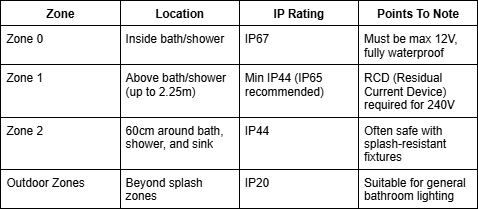
Designing a safe and stylish bathroom or outdoor space starts with choosing the right IP rating. Whether you’re after decorative or functional lighting, selecting fixtures suited to their environment ensures both safety and longevity.
For more inspiration, check out our Bathroom Lighting Guide or Outdoor Lighting Tips, and explore our full bathroom and outdoor lighting collections for fixtures that combine style, safety, and performance.
If you have any questions or would like some further information, feel free to contact a member of our sales team – we’d be more than happy to help you out.

